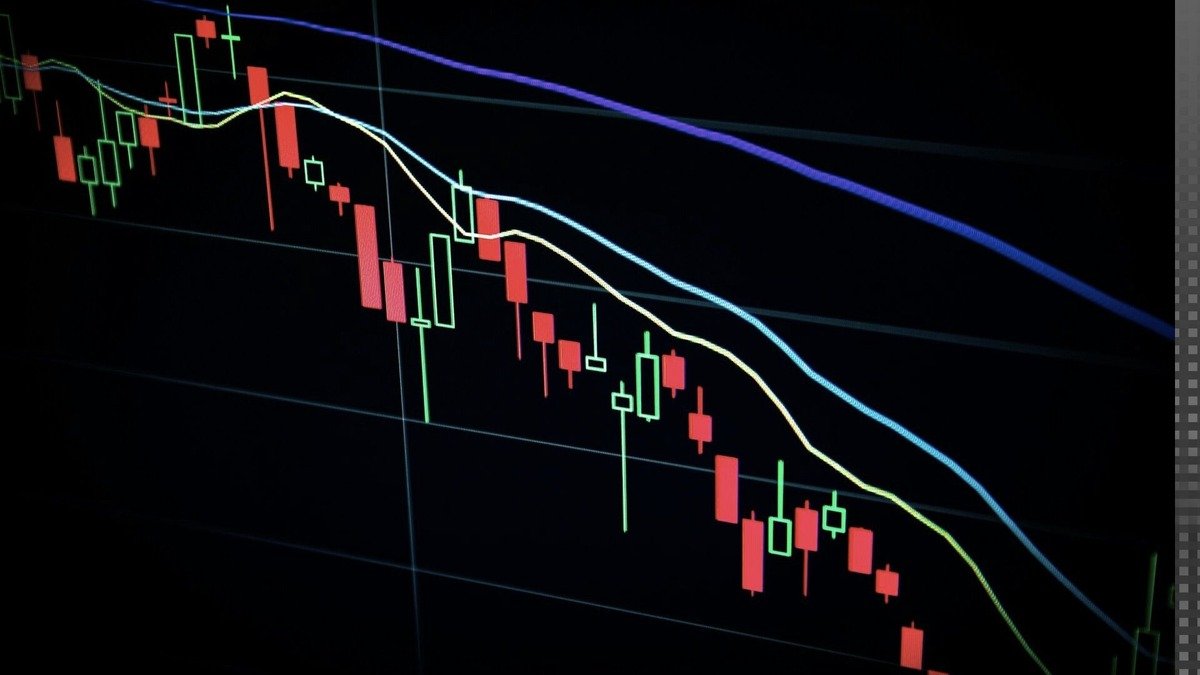Regulation
What Makes Cryptocurrencies More Volatile Than Fiat Currencies

While cryptocurrencies like Bitcoin and Ethereum demonstrate the revolutionary potential of blockchain, they are hampered by their high volatility. Unlike fiat currencies like the US dollar or Japanese yen, which have relatively stable values, cryptocurrencies experience significant price movements within hours.
On March 12, 2020, the price of Bitcoin dropped 40% from $7,900 to $4,600, alarming traders and investors. On June 21, 2017, the value of Ethereum also dropped dramatically, falling from $319 to $0.10 in just a few seconds. This drop occurred following a multi-million dollar sell order, which drew attention to the extreme volatility of cryptocurrencies.
Whether you are an active crypto investor or a financial markets enthusiast, in this blog post you will learn about the forces that lead to the high volatility of digital currencies. Here are the reasons why cryptocurrencies are more volatile than their fiat counterparts:
The Speculative Nature of Digital Currency Traders
Many traders in crypto markets are constantly looking to make small profits here and there. This is why you will find an unusually high number of scalpers and day traders looking to profit from short-term price movements in the digital currency market. Most of these traders use lagging technical indicators like MACD and Bollinger Bands to make their decisions.
In contrast, fiat currency traders in the forex market tend to buy and hold assets with a view to long-term appreciation. When a large number of traders almost never react to price movements, the market will be much less volatile.
A small percentage of traders as well playing with crypto because they believe they can make quick profits without getting caught up in the drama of crypto price fluctuations. The speculative nature of crypto traders is fueled by the fact that the market never “sleeps.” The market is traded 24/7, allowing retail traders and institutions to react instantly to new information and market conditions. The result of this never-ending trading environment is high volatility, as there can be a high volume of transactions in a short period of time.
Aside from technical analysis, speculative traders make most of their trading decisions based on market sentiment, which makes cryptocurrencies very sensitive to news. Once a positive news story about a specific cryptocurrency being adopted by a major company is released, the price of the cryptocurrency increases.
For example, when Tesla disclosed in an SEC filing on February 8, 2021, that it bought $1.5 billion worth of BitcoinThe price of the coin rose from $38,000 to $46,000 in a matter of hours.
Traders gauge market sentiment using social media platforms like Twitter and Reddit. Gen Z and millennials make up a large percentage of cryptocurrency traders, and many of them have discussions on social media. There are social media share buttons that can spread information quickly. The Retweet feature on Twitter increases the number of post impressions, which can affect the opinion of multiple traders in a short period of time.
An example is what is called “Elon effectwhich prompts cryptocurrency traders to monitor Elon Musk’s tweets about which cryptocurrencies to buy. A single tweet from Elon Musk about Dogecoin on April 15 caused the coin to skyrocket 260%.
Fear of missing out (FOMO)
Fear of missing out (FOMO) is the apprehension felt when an individual thinks they are unaware of an exciting uptrend in crypto prices. It starts when a crypto asset rises in value and a lot of attention is paid to the coin. When speculative investors discover the news on social and traditional media, they start to feel like they are missing out on potential gains.
Therefore, they start investing money in the hot digital currency, which drives the price up even more in a short period of time. At some point, the token price becomes much higher than its real value, creating a bubble. Once the bubble bursts, the asset price drops rapidly, leading to increased volatility during both the uptrend and downtrend.
A key example of this is the increase in the price of Bitcoin in 2017, from around $1,000 at the start of the year to almost $20,000 in December.
Low regulation and market maturity
Although the fact that the use of cryptocurrencies is not limited by borders is an advantage, it promotes the lack of global consensus on how to regulate them. The main reason for the weak regulatory environment in the crypto sector is that it is relatively young compared to other financial instruments.
Bitcoin, the first cryptocurrency, was created in 2009, and people still have questions about its use. identity of the creatorBy comparison, fiat currencies as we know them have been around since the collapse of the gold standard during the Great Depression of the 1930s.
Many government agencies around the world are still unsure how to regulate cryptocurrencies. While some have banned cryptocurrencies, others have actively encouraged and supported them.
Uncertainty surrounding crypto regulation affects investor confidence, which triggers immediate price fluctuations in the digital currency market. As soon as a regulator of a major economy announces restrictions or rules on crypto, it can trigger panic trading in the market. In 2021, China started master cryptocurrency mining activitiesciting financial stability reasons, which led to a decline in the Bitcoin hash rate and a subsequent decline in the market capitalization of cryptocurrencies.
On the other hand, fiat currencies have a defined regulatory framework, which ensures that there is little to no price movement following regulatory announcements. They are backed by central banks and economic frameworks that make them highly predictable and therefore stable.
The fact that cryptocurrencies haven’t been around as long as fiat currencies has an impact on their proneness to manipulation by large investors. In the digital currency space, it’s common to hear the term “whales.” Whales are entities that hold obscene amounts of a specific cryptocurrency and can influence the price of that coin by placing large buy or sell orders.
The weak regulation of the market also means that larger investors can create pump-and-dump schemes, in which the price of a coin is artificially inflated and then lowered once investors dump their coins.
Global Economic Events
Digital currencies tend to react more intensely to global economic events than fiat currencies. In times of economic instability, such as a stock market crash, investors put their money into cryptocurrencies, which causes prices to rise.
Geopolitical events such as trade wars can also trigger volatility in fiat currencies. However, the effect of volatility is stronger on cryptocurrency prices. Conflicts in certain regions of the world can prompt investors to turn to cryptocurrencies as a hedge against the instability of conventional financial markets.
Macroeconomic trends such as changes in inflation and interest rates make cryptocurrency prices more volatile. There is a negative correlational relationship between interest rates and the price of cryptocurrencies. In essence, the lower the interest rate announced by central banks, the more cryptocurrency prices tend to increase.
When interest rates are low, people tend to invest in riskier assets like cryptocurrencies, which can trigger volatility in digital asset prices. On the other hand, high interest rates may cause investors to withdraw their funds from cryptocurrencies, thereby causing prices to fall.
Technological development
Technological developments in crypto can trigger volatility in the digital currency market.
When investors feel that a specific cryptocurrency is going to improve in terms of security and efficiency, it builds confidence. If the cryptocurrency project team delays the launch of a new product or technology, investors might see this as a sign of trouble and trigger a sell-off.
For example, Ethereum 2.0, which switched from the proof-of-work consensus mechanism to the more efficient proof-of-stake consensus mechanism, triggered a surge in the price of its token.
Another technological development that impacts cryptocurrency price volatility is the security of a blockchain or platform. Once users discover a bug in the blockchain protocol, it can negatively impact the price as hackers can exploit it. A notable example is the Mt Gox exchange hack in 2014, which saw high Bitcoin volatility after 850,000 Bitcoins were stolen from the platform.
The increase in anonymous casinos also highlighted another positive aspect of crypto adoption. Since casino players realized that these platforms offer secure and private gambling, the user base of these anonymous casinos has increased, contributing to the volatility of cryptocurrency prices.
Technological advancements such as decentralized finance (DeFi) and non-fungible tokens (NFTs) have opened new avenues for increased volatility in cryptocurrencies. The DeFi system enhances the existing financial system with its decentralized protocols, while NFTs represent ownership of a real-world asset.
By increasing liquidity in the crypto market, DeFi platforms can result in higher volatility due to large trading volumes. NFTs can cause crypto volatility since their prices can rise or fall depending on their value.
Regulation
Crypto community gets involved in anti-government protests in Nigeria

Amid the #EndBadGovernanceInNigeria protests in Nigeria, a notable shift is occurring within the country’s cryptocurrency sector. As the general public demands sweeping governance reforms, crypto community leaders are seizing the opportunity to advocate for specific regulatory changes.
Rume Ophi, former secretary of the Blockchain Stakeholders Association of Nigeria (SiBAN), stressed the critical need to integrate crypto-focused demands into the broader agenda of the protests.
Ophi explained the dual benefit of such requirements, noting that proper regulation can spur substantial economic growth by attracting investors and creating job opportunities. Ophi noted, “Including calls for favorable crypto regulations is not just about the crypto community; it’s about leveraging these technologies to foster broader economic prosperity.”
Existing government efforts
In opposition to Ophi’s call for action, Chimezie Chuta, chair of the National Blockchain Policy Steering Committee, presents a different view. He pointed out The Nigerian government continued efforts to nurture the blockchain and cryptocurrency industries.
According to Chuta, the creation of a steering committee was essential to effectively address the needs of the crypto community.
Chuta also highlighted the creation of a subcommittee to harmonize regulations for virtual asset service providers (VASPs). With the aim of streamlining operations and providing clear regulatory direction, the initiative involves cooperation with major organizations including the Securities and Exchange Commission (SEC) and the Central Bank of Nigeria (CBN). “Our efforts should mitigate the need for protest as substantial progress is being made to address the needs of the crypto industry,” Chuta said.
A united call for support
The ongoing dialogue between the crypto community and government agencies reflects a complex landscape of negotiations and demands for progress.
While actors like Ophi are calling for more direct action and the inclusion of crypto demands in protest agendas, government figures like Chuta are advocating for recognition of the steps already taken.
As protests continue, the crypto community’s push for regulatory reform highlights a crucial aspect of Nigeria’s broader fight to improve governance and economic policies. Both sides agree that favorable regulations are critical to the successful adoption and implementation of blockchain technologies, signaling a potentially transformative era for Nigeria’s economic framework.
Read also : OKX Exchange Exits Nigerian Market Amid Regulatory Crackdown
Regulation
Cryptocurrency Regulations in Slovenia 2024

Slovenia, a small but highly developed European country with a population of 2.1 million, boasts a rich industrial history that has contributed greatly to its strong economy. As the most economically developed Slavic nation, Slovenia has grown steadily since adopting the euro in 2007. Its openness to innovation has been a key factor in its success in the industrial sector, making it a prime destination for cryptocurrency enthusiasts. Many believe that Slovenia is poised to become a powerful fintech hub in Europe. But does its current regulatory framework for cryptocurrencies support such aspirations?
Let’s explore Slovenia’s cryptocurrency regulations and see if they can propel the country to the forefront of the cryptocurrency landscape. My expectations are positive. What are yours? Before we answer, let’s dig a little deeper.
1. Cryptocurrency regulation in Slovenia: an overview
Slovenia is renowned for its innovation-friendly stance, providing a supportive environment for emerging technologies such as blockchain and cryptocurrencies. Under the Payment Services and Systems Act, cryptocurrencies are classified as virtual assets rather than financial or monetary instruments.
The regulation of the cryptocurrency sector in Slovenia is decentralized. Different authorities manage different aspects of the ecosystem. For example, the Bank of Slovenia and the Securities Market Agency oversee cryptocurrency transactions to ensure compliance with financial laws, including anti-money laundering (AML) and terrorist financing regulations. The Slovenian Act on the Prevention of Money Laundering and Terrorist Financing (ZPPDFT-2) incorporates the EU’s 5th Anti-Money Laundering Directive (5MLD) and aligns with the latest FATF recommendations. All virtual currency service providers must register with the Office of the Republic of Slovenia.
2. Cryptocurrency regulation in Slovenia: what’s new?
Several notable developments have taken place this year in the cryptocurrency sector in Slovenia:
July 25, 2024:Slovenia has issued a €30 million on-chain digital sovereign bond, the first of its kind in the EU, with a yield of 3.65%, maturing on 25 November 2024.
May 14, 2024:NiceHash has announced the first Slovenian Bitcoin-focused conference, NiceHashX, scheduled for November 8-9 in Maribor.
3. Explanation of the tax framework for cryptocurrencies in Slovenia
The Slovenian cryptocurrency tax framework provides clear guidelines for individuals and businesses. According to the Slovenian Financial Administration, the tax treatment depends on the status of the trader and the nature of the transaction.
- People:Income earned from cryptocurrencies through employment or ongoing business activities is subject to personal income tax. However, capital gains from transactions or market fluctuations are exempt from tax.
- Companies:Capital gains from cryptocurrency-related activities are subject to a 19% corporate tax. Value-added tax (VAT) generally applies at a rate of 22%, although cryptocurrency transactions that are considered as means of payment are exempt from VAT. Companies are not allowed to limit payment methods to cryptocurrencies alone. Tokens issued during ICOs must follow standard accounting rules and corporate tax law.
4. Cryptocurrency Mining in Slovenia: What You Need to Know
Cryptocurrency mining is not restricted in Slovenia, but income from mining is considered business income and is therefore taxable. This includes rewards from validating transactions and any additional income from mining operations. Both individuals and legal entities must comply with Slovenian tax regulations.
5. Timeline of the development of cryptocurrency regulation in Slovenia
Here is a timeline highlighting the evolution of cryptocurrency regulations in Slovenia:
- 2013:The Slovenian Financial Administration has issued guidelines stating that income from cryptocurrency transactions should be taxed.
- 2017:The Slovenian Financial Administration has provided more detailed guidelines on cryptocurrency taxation, depending on factors such as the status of the trader and the type of transaction.
- 2023:The EU adopted the Markets in Crypto-Assets (MiCA) Regulation, establishing a uniform regulatory framework for crypto-assets, their issuers and service providers across the EU.
Endnote
Slovenia’s approach to the cryptocurrency sector is commendable, reflecting its optimistic view of the future of cryptocurrencies. The country’s balanced regulatory framework supports cryptocurrency innovation while protecting users’ rights and preventing illegal activities. Recent developments demonstrate Slovenia’s commitment to continually improving its regulatory environment. Slovenia’s cryptocurrency regulatory framework sets a positive example for other nations navigating the evolving cryptocurrency landscape.
Read also : Hong Kong Cryptocurrency Regulations 2024
Regulation
A Blank Sheet for Cryptocurrencies: Kamala Harris’ Regulatory Opportunity

photo by Shubham Dhage on Unsplash
As the cryptocurrency landscape continues to evolve, the need for clear regulation has never been more pressing.
With Vice President Kamala Harris now leading the charge on digital asset regulation in the United States, this represents a unique opportunity to start fresh. This fresh start can foster innovation and protect consumers. It can also pave the way for widespread adoption across industries, including real estate agencies, healthcare providers, and online gaming platforms like these. online casinos ukAccording to experts at SafestCasinoSites, these platforms come with benefits such as bonus offers, a wide selection of games, and various payment methods. Ultimately, all this increase in adoption could propel the cryptocurrency market forward.
With this in mind, let’s look at the current state of cryptocurrency regulation in the United States, a complex and confusing landscape. Multiple agencies, including the Securities and Exchange Commission (SEC), the Commodity Futures Trading Commission (CFTC), and the Financial Crimes Enforcement Network (FinCEN), have overlapping jurisdictions, creating a fragmented regulatory environment. This lack of clarity has stifled innovation as companies are reluctant to invest in the United States, fearing regulatory repercussions. A coherent and clear regulatory framework is urgently needed to realize the full potential of cryptocurrencies in the United States.
While the US struggles to find its footing, other countries, such as Singapore and the UK, are actively looking into the cryptocurrency sector by adopting clear and supportive regulatory frameworks. This has led to a brain drain, with companies choosing to locate in more conducive environments.
Vice President Kamala Harris has a unique opportunity to change that narrative and start over. Regulation of cryptocurrencies. By taking a comprehensive and inclusive approach, it can help create a framework that balances consumer protection with innovation and growth. The time has come for clear and effective regulation of cryptocurrencies in the United States.
Effective regulation of digital assets is essential to foster a safe and innovative environment. The key principles guiding this regulation are clarity, innovation, global cooperation, consumer protection, and flexibility. Clear definitions and guidelines eliminate ambiguity while encouraging experimentation and development to ensure progress. Collaboration with international partners establishes consistent standards, preventing regulatory arbitrage. Strong safeguards protect consumers from fraud and market abuse, and adaptability allows for evolution in response to emerging trends and technologies, striking a balance between innovation and protection.
The benefits of effective cryptocurrency regulation are multiple and far-reaching. By establishing clear guidelines, governments can attract investors and mainstream users, driving growth and adoption. This can, in turn, position countries like the United States as global leaders in fintech and innovation. Strong safeguards will also increase consumer confidence in digital assets and related products, increasing economic activity.
A thriving crypto industry can contribute significantly to GDP and job creation, which has a positive impact on the overall economy. Furthermore, effective regulation has paved the way for the growth of many businesses such as tech startups, online casinos, and pharmaceutical companies, demonstrating that clear guidelines can open up new opportunities without stifling innovation. This is a great example of how regulation can allay fears of regressive policies, even if Kamala Harris does not repeal the current progressive approach. By adopting effective regulation, governments can create fertile ground for the crypto industry to thrive, thereby promoting progress and prosperity.
Regulation
South Korea Imposes New ‘Monitoring’ Fees on Cryptocurrency Exchanges

Big news! The latest regulatory changes in South Korea are expected to impact major cryptocurrency exchanges like Upbit and Bithumb. Under the updated regulations, these platforms will now have to pay monitoring fees, which could cause problems for some exchanges.
Overview of new fees
In the latest move to regulate cryptocurrencies, the Financial Services Commission announced on July 1 the revised “Enforcement Order of the Act on the Establishment of the Financial Services Commission, etc.” update “Regulations on the collection of contributions from financial institutions, etc.” According to local legislation newsThe regulations require virtual asset operators to pay supervisory fees for inspections conducted by the Financial Supervisory Service starting next year. The total fees for the four major exchanges are estimated at around 300 million won, or about $220,000.
Apportionment of costs
Upbit, which holds a dominant market share, is expected to bear more than 90% of the total fee, or about 272 million won ($199,592) based on its operating revenue. Bithumb will pay about 21.14 million won ($155,157), while Coinone and GOPAX will contribute about 6.03 million won ($4,422) and 830,000 won ($608), respectively. Korbit is excluded from this fee due to its lower operating revenue.
Impact on the industry
The supervision fee will function similarly to a quasi-tax for financial institutions subject to inspections by the Financial Supervisory Service. The new law requires any company with a turnover of 3 billion won or more to pay the fee.
In the past, fees for electronic financial companies and P2P investment firms were phased in over three years. However, the taxation of virtual asset operators has been accelerated, reflecting the rapid growth of the cryptocurrency market and increasing regulatory scrutiny.
Industry reactions
The rapid introduction of the fee was unexpected by some industry players, who had expected a delay. Financial Supervisory Service officials justified the decision by citing the creation of the body concerned and the costs already incurred.
While larger exchanges like Upbit and Bithumb can afford the cost, smaller exchanges like Coinone and GOPAX, which are currently operating at a loss, could face an additional financial burden. This is part of a broader trend of declining trading volumes for South Korean exchanges, which have seen a 30% drop since the new law went into effect.
-

 Regulation12 months ago
Regulation12 months agoRipple CTO and Cardano founder clash over XRP’s regulatory challenges ⋆ ZyCrypto
-

 Regulation10 months ago
Regulation10 months agoNancy Pelosi Considers Supporting Republican Crypto Bill FIT21 – London Business News
-

 Videos11 months ago
Videos11 months agoCryptocurrency News: Bitcoin, ETH ETF, AI Crypto Rally, AKT, TON & MORE!!
-

 Regulation11 months ago
Regulation11 months agoBitcoin’s future is ‘bleak’ and ripe for regulation, says lead developer
-

 News9 months ago
News9 months agoAave Price Increases Following Whales Accumulation and V3.1 Launch
-

 Regulation9 months ago
Regulation9 months agoSouth Korea Imposes New ‘Monitoring’ Fees on Cryptocurrency Exchanges
-

 Regulation9 months ago
Regulation9 months agoA Blank Sheet for Cryptocurrencies: Kamala Harris’ Regulatory Opportunity
-

 Regulation9 months ago
Regulation9 months agoCryptocurrency Regulations in Slovenia 2024
-

 News11 months ago
News11 months agoThe trader earned $46 million with PEPE after reaching a new ATH
-

 Regulation11 months ago
Regulation11 months agoCrypto needs regulation to thrive: Tyler Cowen
-

 Blockchain11 months ago
Blockchain11 months agoSolana ranks the fastest blockchain in the world, surpassing Ethereum, Polygon ⋆ ZyCrypto
-

 Blockchain11 months ago
Blockchain11 months agoSolana Surpasses Ethereum and Polygon as the Fastest Blockchain ⋆ ZyCrypto

















